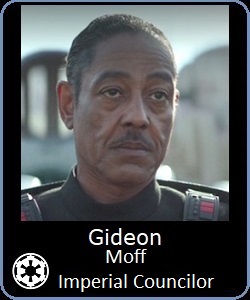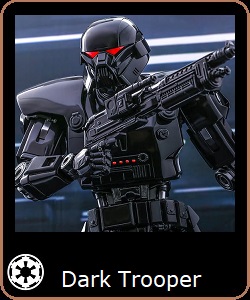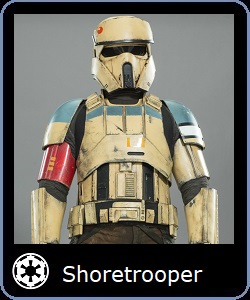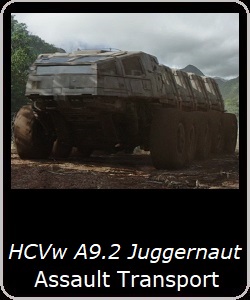

The New Republic | The New Republic Forces | The Empire
Other Factions | The Jedi


Remnants of the Galactic Empire continued to function as petty military dictatorships after the formal surrender of the Imperial military in
7982 (5 ABY). The Empire was no longer galactic at the time of its surrender, nor had it been ruled by an Emperor for over a year, however
it continued to represent the fascist, authoritarian, and militaristic political philosophy of Palpatine's government. The largest Imperial
remnants were found in the Core and the galactic south, and had remained relatively united. The Imperial remnants spread throughout
the other Rim regions tended to be self-governing states which had been only nominally loyal to the Imperial Core during the last year of
the Galactic Civil War. After the treaty, remnants in the Core were permitted continue to exist as Imperial rump-states, provided that all
elements of the Empire's fascist government were disbanded, military recruitment and training was ended, and the remaining forces of
the Imperial navy were confined to the remaining Imperial territory. Remote Imperial remnants in the Rim were also allowed to continue
to govern their holdings for the time being, provided they adhered to the terms of the Concordance. Those elements of the Imperial military
in the Core who refused to accept the surrender withdrew to these Rim remnants. The New Republic conducted a series of campaigns
against these remnants later in that year, eventually forcing the remaining Imperials to go into hiding or to begin acting as if they intended
to comply with the treaty. Core remnants were gradually absorbed into the New Republic over the next few years, and remaining Imperial
military equipment was decommissioned. This program was severely curtailed in the Rim due to the lack of resources in stability in the New
Republic, allowing the illegal Imperial outfits in the Rim and the Unknown Regions to reorganize and consolidate their forces. The Empire
once again began to grow by 7986 (9 BBY), slowly at first and mostly in the Rim. The confederated remnants of the Empire claimed to have
its jurisdictional authority, and therefore the right to rule the entire galaxy. Its actual loyal population and production base is uncertain,
but it is assumed to have had some domains with at least some well-populated planets. Often, an Imperial presence in this era was
limited to military and resource extraction activities, rather than focusing on maintaining political control over a given world.
LEADERSHIP

Grand Admiral Thrawn was considered the "heir to the Empire", having survived the Civil War in the Unknown regions where he began
to build a new power base. Morgan Elsbeth was a top Imperial official involved in resource extraction and military production.


Shadow Council
The Shadow Council was the governing body of the Empire during the first half of a decade after the end of the Civil War. It was made
up of nine members of the Imperial military or the military government who each led one the remaining, stable Imperial remnants.
The Empire functioned as a confederation, with each remnant responsible for its own internal governance, and sharing resources
by committee. The members of the Council attained their position by surviving the attrition of the Civil War, and often by political
wrangling against other prominent Imperials in their sectors. Originally created during the last year of the Civil War, the Council
recognized Thrawn's authority upon his return from the Unknown Regions. Members of the Shadow Council in 7968 (9 ABY):









THE IMPERIAL MILITARY
The Imperial military was somewhat simplified from its classic form, due to having been severely reduced in size. It retained most of
the features and structure of the Galactic Empire's military, and was broadly divided into an Army and a Navy, augmented by Military
Intelligence, Naval Infantry, Operations, and the Starfighter Corps. The organizational structure of the military is assumed to have
been scaled-down to reflect their actual numbers, however the full extent of their unseen forces is not currently known. Imperial
ranks and insignia appear to have been a continuation of those in the earlier era, with at least one unexplained alteration. High
Command seems to have served as the leadership of the state and the military, making the Empire officially a military dictatorship.
Most officers of significant rank are assumed to be experienced veterans of the Imperial military who were fiercely loyal to the Empire.

Main Article: Ranks and Rank Insignia
THE IMPERIAL NAVY

The Imperial Navy of the remnant state was formed around the significantly-reduced remains of the largest and most powerful navy
the galaxy had ever seen. It was ultimately a reformed version of the ancient Republic Navy, and still carried the naval procedures and
traditions of that institution. The Empire's ability to build new ships in the early New Republic era, particular in the Unknown Regions,
is uncertain, but is assumed to have recovered at least a little from the complete collapse of new production at the end of the Civil War.
The majority of its ships were likely pre-surrender, and may have numbered in the hundreds or thousands. Imperial Navy officers initially
were the experienced and fiercely-loyal survivors of the Civil War, which were presumably being augmented with new recruits.
Leadership
The leadership of the Imperial Navy was subordinate to military High Command and the military government. It is presumed to have still
held direct authority over the Navy, Naval Intelligence, the Naval Infantry Corps, and the Starfighter Corps. Naval officers in the field were
typically in command of overall Imperial missions, when personnel from multiple branches were involved.
Known Staff Officers


Starfleet
The Imperial Starfleet was presumably based around dozens of huge capital ships, possibly hundreds, supplemented by hundreds of support
vessels and starfighters, possibly thousands. The vast majority of Imperial starships were products of Kuat Drive Yards or Sienar Systems.
These two massive state-affiliated manufacturers were then primarily under New Republic control, however it is possible some of their
manufacturing resources were intentionally relocated to hidden and remote systems and could produce limited numbers of these same
designs. It is also possible that whatever resources Thrawn's new power base held were capable of reproducing new ships by copying
these designs. It is assumed that the majority of the fleet at the time of the Empire's reemergence predated the end of the war.
Ships of the Imperial Navy seen in canon to still be in use by the Imperial remnants:
Command Ships


Support Ships


THE IMPERIAL STARFIGHTER CORPS

The Imperial Starfighter Corps was an independently operating branch of the Imperial Navy, which probably still maintained some
of its own facilities, personnel, and equipment. Its independence served to better facilitate its planet-based operations which were
largely in concert with the Imperial Army. Its forces were usually subordinate to overall mission command in combined operations.
Forces
The Empire relied heavily on the advanced starfighters of Sienar Systems, whose production base was largely lost to the Imperial remnants.
At the same time, the Empire produced these designs across the Empire in its own military factories, some of which may still have been
within the domain of the Imperial remnants. Although their fighters were among the most modern and high-quality in the galaxy during
the Empire's reemergence, their former advantage in numbers was severely reduced, as was the availability of new fighters and pilots.
Starfighters


THE IMPERIAL ARMY

The Imperial Army of the remnant state was formed around the loyal remains of what had formerly been among the largest armies in
galactic history. As an institution, it was the last surviving remnant of the Grand Army of the Republic, however it bore little resemblance
to that force after two and a half decades of transformation. Those soldiers who remained loyal to the Empire after the atrocities of
the Civil War and the official surrender were amongst the most hardcore Imperial supporters, and probably included many who had
joined the Imperial military at some point during the Civil War. Although committed, these forces were not excessively large and were
often troops of moderate quality. These forces were augmented by recruitment during the first years after the Civil War, drawn from
remote territories still held by the Empire or from across the Rim where many were eager for employment, security, and stability.
Recruitment by Imperial remnants was illegal according to the Galactic Concordance, and thus had to be carried out without the New
Republic's knowledge. Combined with the widespread anti-Empire sentiment, this provided only enough forces to support smaller
units to protect vital interests. It is unknown if the Imperial remnant had larger reserves of troops in its unknown domains. Imperial
Army leadership was primarily drawn from experienced Civil War veterans, augmented as necessary by promising newcomers.
Leadership
The leadership of the Imperial Army was subordinate to military High Command and the military government. It is presumed to have still
held direct authority over the Army, Army Intelligence, and Army Operations. Army officers in the field led most permanent planet-based
Forces, as well as offensive ground operations, and were often in command of formations which included units from other branches of
the Imperial Military, including sometimes naval resources and personnel.
Known Staff Officers

Organization
The Imperial Army was probably reorganized after the Civil War to fit its significantly reduced size. No units larger than a Company
have been observed in canon, however it is assumed that there were larger formations on populated production centers controlled
the remnant state. It can be assumed that the larger Army was still divided into Legions and Divisions, subdivided into Regiments,
Brigades and Battalions. Battalions were subdivided into Sections, which were divided into Squads.
Known Units


Forces
There were many varieties of Imperial troopers with specialized training and equipment. Some varieties of stormtrooper previously
used by the Empire were less common due to their reduced operations and domain. The Imperial Army utilized a variety of combat
vehicles, weapons, and droids, much of which was highly-advanced and built within the last decade of the Empire. Their continued
access to advanced research and development led to the creation of cutting-edge, fully-automated droid Dark Troopers.
Infantry









Vehicles





OPERATIONS

Imperial Operations branch were the combat engineers and technical service of the Imperial military, responsible for military research
and development, as well as construction, engineering, and maintenance. Its technicians were usually found working within units of all
other branches, including aboard Navy vessels and starbases. High-ranking Operations officers were also sometimes placed in command
of joint units, but usually only where Operations activity is the primary mission. The work of the Operations branch was essential to
the remnant Empire, which lacked its former advantage in production: unlimited resources, finances, and labor forces.
Facilities
The extent of Imperial domains in the Unknown Regions and on the peripheries of known space are as yet unknown. Most Imperial
operations within known space were located throughout the Rim, and were usually small facilities conducting research, development,
or resource extraction. Some of these facilities were located within legally recognized Imperial remnants, and thus could legally operate
within the confines of the Galactic Concordance. Other Imperial facilities were either new or previously unknown to the New Republic,
and could continue to operate provided they did not draw the attention of New Republic forces. Known worlds with Imperial facilities:




Access to resources was the most significant limiting factor to rebuilding the strength of the Imperial military, and operations such as
the refinery on Morak took advantage of the lawless state of many Rim regions to extract resources without permission of the local
population. Imperial bases like that on Nevarro were engaged in secret projects, many of which had been initiated by the Emperor.

